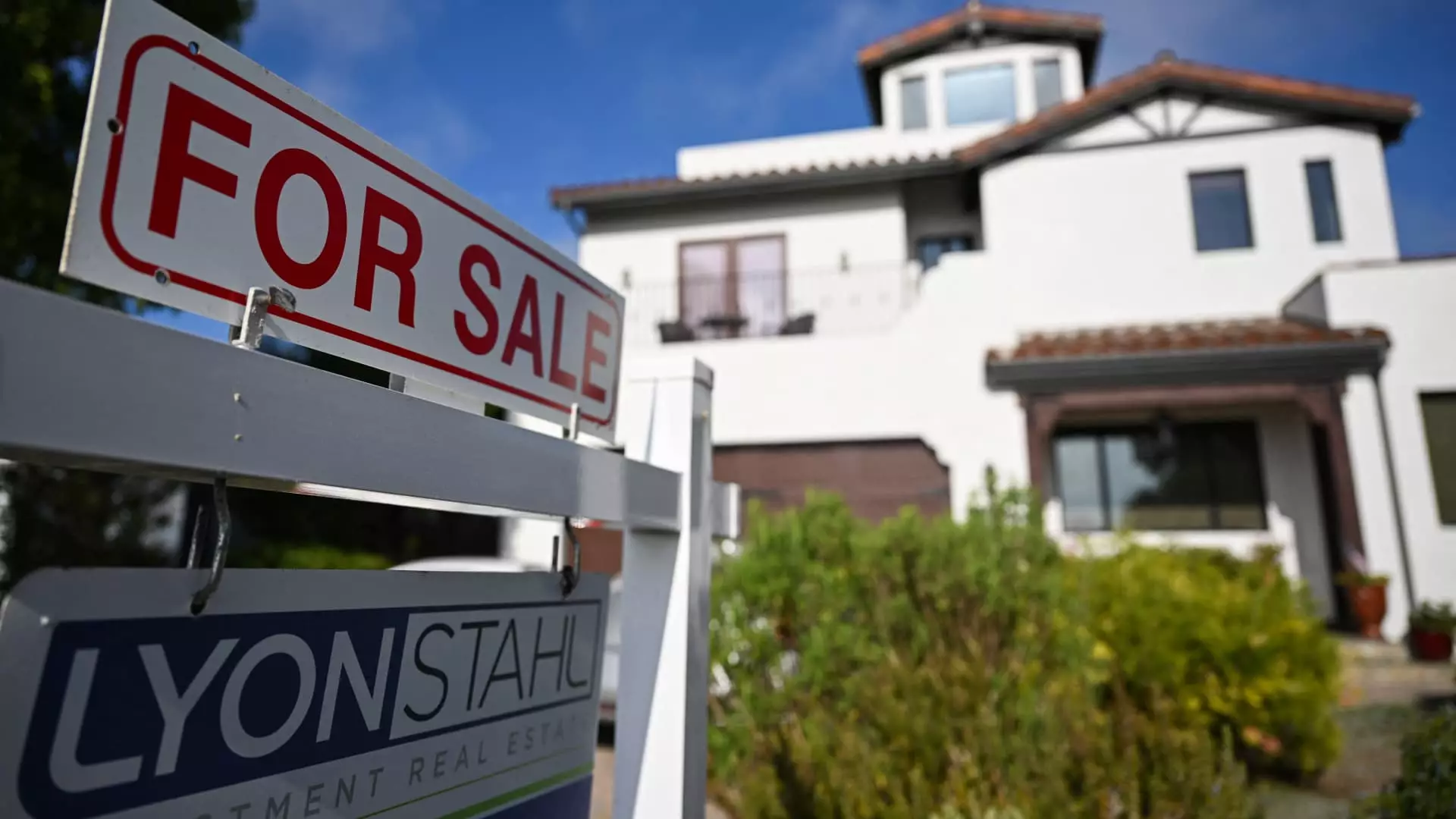The recent plunge in mortgage rates, falling to an average of 6.63%, has ignited both excitement and skepticism across the housing market. This decline, sparked by the Trump administration’s latest tariff pronouncement, caused a significant sell-off in the stock market, prompting a rush to the safety of bonds. While some may view the drop as a much-needed reprieve for potential homebuyers, it raises critical questions about the sustainability of this relief. Is this temporary drop a true sign of market stability, or simply an illusion masking deeper vulnerabilities?
History has shown that housing markets can rapidly adjust to changes in financial stimuli, but the question remains: how long can we rely on bond market fluctuations to alleviate home financing costs? Matthew Graham’s observation regarding the uncertainty surrounding tariffs adds weight to the concern that current mortgage rates may not be indicative of a long-term trend. As external trade pressures mount, the housing market could be subjected to unpredictable shifts that undermine even the modest gains we may now experience.
Affordability Crisis: A Grim Reality for Average Americans
Despite this seemingly positive news surrounding mortgage rates, the grim reality of home affordability looms larger than ever. The data reveals a stark divide; approximately 70% of American households are unable to afford a $400,000 home. With the median price of new homes projected to hit around $460,000 by 2025, we find ourselves staring into an affordability crisis that could push homeownership out of reach for millions. This is a defining moment in American society—choosing between the promise of stability offered by homeownership and the cold, hard truth of economic inequality.
The figures bear an unsettling truth. To purchase a $200,000 home at the current mortgage rate of 6.5%, a household must command an income of at least $61,487. As staggering as the housing prices are, the implications for lower- and middle-class Americans are even more disheartening. With nearly 52.87 million households projected to fall below this income threshold, we must question the normative rationale driving housing prices and the policies that seem increasingly indifferent to the struggles faced by average families.
The Unmet Demand: Supply and Pricing Disconnect
While there is a growing supply of homes entering the market, benchmarks indicate that the current offerings are mysteriously misaligned with actual demands. Available listings have increased, yet most of these properties do not cater to the lower-income buyers who desperately need relief. Chronic underbuilding since the Great Recession has resulted in a situation where the supply fails to meet the pressing needs of a demographics skewed toward affordability.
The reality of homeowners entering the market for the first time finds many bewildered by rising prices, painting an image of disconnect between potential buyers and the houses that are available. Matt Ferris from Redfin has pointed out that this tide of new sellers, fueled by a fear of missing out on top selling prices, fails to address the critical issue that these aspirational listings often lie outside of most people’s budgets. It’s a frustrating cycle, as those most in need of affordable homes are left grappling with choices that simply don’t exist for them.
Where Are All the Buyers? The Response to Market Conditions
Despite the seasonally busy spring real estate market, signs of a sluggish buyer response are beginning to surface. A significant 10% increase in new listings may seem advantageous on the surface, but the harsh contrast presented by rising days on the market and falling pending sales is concerning. Particularly in major urban centers, the sharp declines in signed contracts—15.1% and 13.7% in Jacksonville and Miami, respectively—hint at a broader reluctance among buyers to engage under these difficult economic conditions.
This trend signifies a cautious shift toward a market rebalancing itself—a response shaped by rising living costs and the whisper of recession looming in the background. Economists like Danielle Hale remind us that buyer hesitation isn’t merely a seasonal fluke; instead, it reflects a harrowing mix of external economic pressures and internal market dynamics. Such systemic risks ought to command our attention and invoke empathy for those who find homeownership slipping through their fingers.
While the recent drop in mortgage rates seems to offer hope, it is crucial to remain vigilant to the systemic issues plaguing the housing market today. The intertwined fates of affordability, demand, and the overall economic landscape should encourage a deep and honest dialogue about the future of homeownership in America.

